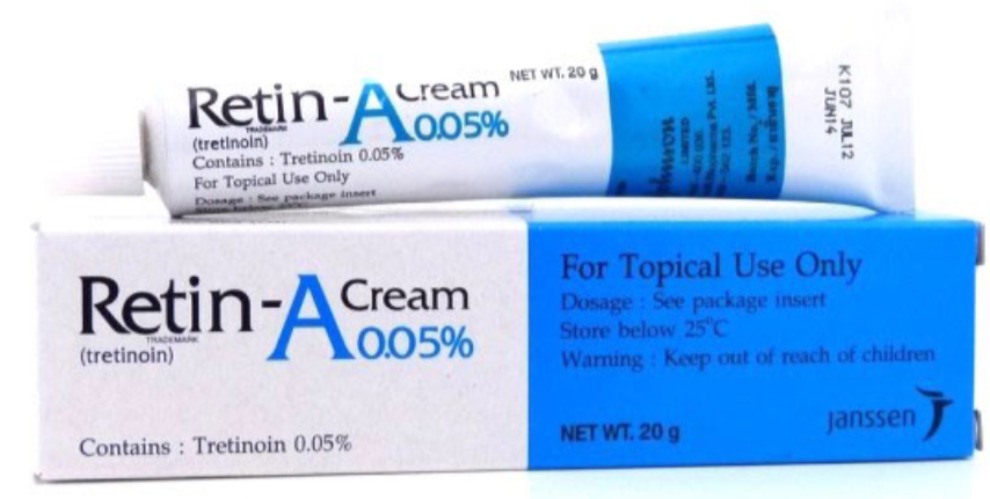Ask your dermatologist what their top remedy for overall skin rejuvenation and preventative aging is, and they will most likely suggest a Retinoid. This all-star active is the gold standard for anti-aging, and even acne in some cases; it is the only ingredient proven to regulate gene expression and reverse the signs of photo-aging.
Despite the notoriety of retinoids, there is resounding fear around this skincare hero. That’s because it’s hard to discern between the different types, and many people don’t know how to use them correctly. Then there’s the question of tolerability. Retinoids are associated with irritation in the form of redness, peeling, or scaling and people often stop retinoid use as a result.
Key benefits of retinoids
Retinoids primarily work by encouraging cells in the basal layer (bottom most) of the epidermis to divide, which is known as cell differentiation. As a result, new cells travel to the stratum corneum (surface layer) of our skin.
As we age, our dermis thins (goodbye collagen) and our epidermis thickens (hello dullness). And our skin starts to demonstrate damage due to cumulative sun exposure. We lose the resilience, suppleness, and bounciness in our skin, and see increased fine lines and uneven pigmentation. Prolonged use of retinoids can reverse this process so that collagen rebuilds, our dermis re-thickens, and our epidermis becomes more even and smooth. This can manifest as a multitude of benefits:
-Increased skin luminosity and radiance
-Diminished spots or pigmentation
-Minimized pores
-Softer fine lines and wrinkles
-Tactile smoothness and softness
-Reduced symptoms of acne or p.acnes
How to know if your retinoid is working
When you first start using a retinoid, a process called facial retinization occurs. Erythema (redness in skin as result of inflammation), peeling, scaling, and dryness are all common symptoms and completely normal. After the peeling or redness subsides, an immediate benefit people may experience is improved skin clarity and brightness.
The basics of retinoids
Retinoids are a class of fat-soluble compounds of both natural, biologically active forms of Vitamin A and synthetic analogues of Vitamin A.[1] The official name of Vitamin A is Retinol and some of its derivatives include: tretinoin (retinoic acid), retinaldehyde, and retinyl esters like Retinyl Palmitate. Not all derivatives are created equal so there is often confusion about which types of retinoids are the most effective. Our skin is only able to recognize and use active retinoids that — are — or can convert to retinoic acid, which then binds to retinoic acid receptors in the cell cytosol and migrates to the cell nucleus, to effect gene expression.
Let’s take a look at a few examples. Tretinoin is pure retinoic acid and that’s why it’s so potent, effective, and fast-acting. As a result, some patients may experience poor tolerability. Retinol, on the other hand, goes through a two-step oxidation process to convert to retinoic acid and is often more tolerable.[2] Retinol is the most common form of active retinoids and you’ll find it in many OTC formulations. Retinyl Palmitate, for example, takes three steps to convert to retinoic acid, rendering it less effective in terms of anti-aging benefits.
What to look for when choosing a retinoid product
We already talked about how not all retinoids are created equal. Well, neither are formulations. Everything from delivery system to retinoid concentration and ingredient purity has a direct impact on product performance or efficacy.
Delivery system. Look out for microencapsulated retinol or similar vehicles that preserve retinoid integrity, prevent degradation, and ensure the active is delivered to the deeper layers of our skin. Retinoids, just like other actives such as Vitamin C, are extremely unstable. They are difficult to formulate with, are sensitive to light, and can oxidize when exposed to air.
Concentration of Retinoid. The higher the percentage, the higher the conversion rate to retinoic acid and therefore greater therapeutic change in the skin. However, higher concentrations equates to increased intolerability at first, so make sure to start at a lower concentration. You can always up the concentration once your skin adapts.
Medical grade. Most OTC formulations do not contain a therapeutic level of an active retinoid to effect significant change in the skin. Medical grade products contain clinical levels of all active ingredients, and when it comes to efficacy and ingredient purity, they are held to the highest standards. Look out for products that are manufactured in FDA approved labs.
Precautions when using retinoids
Retinoids should be used diligently but judiciously. Some key things to be aware of include:
-Like most things in life balance is key…overuse of retinoid products can seriously impair the skin barrier and disrupt a healthy balance of lipids because new cells are constantly being produced and rising to the surface.
-Use at night only as retinoids cause photosensitivity due to the thinning of the top layer of skin. We recommend wearing hats and always wear a broad spectrum sunscreen during the day; a sun protection factor of at least 30 and a physical sunscreen such as Zinc Oxide is advised.
-Keep your retinoid product out of sunlight and always remember to close the container tightly.
-If pregnant or breastfeeding, doctors often suggest to refrain from tretinoin use. At SMD, Dr. Fardin says that “the maternal use of tretinoin poses a potential, albeit low, risk to a fetus, and thus it is generally recommended to avoid its use in pregnancy.”
Retinoid products offered by SMD
–SMD Retinol & Bakuchiol Power Serum (Available in 2.5x, 5x, and 10x)
–SMD Advanced Retinol Serum (Available in 5x and 10x)
-Prescription Tretinoin (Ask your SMD provider today)
–SMD Smooth & Firm Body Lotion
Written by Maya
Reviewed by Ashley Smith, MD
[1] Zasada, Mawina; Budzisz, Elzbieta, “Retinoids: active molecules influencing skin structure formation in cosmetic and dermatological treatments.” NCBI, Aug. 2019. https://www.ncbi.nlm.nih.gov/pmc/articles/PMC6791161/. Accessed 9 Sept. 2020.
[2] Zasada, Mawina; Budzisz, Elzbieta, “Retinoids: active molecules influencing skin structure formation in cosmetic and dermatological treatments.” NCBI, Aug. 2019. https://www.ncbi.nlm.nih.gov/pmc/articles/PMC6791161/. Accessed 9 Sept. 2020.

